I don’t talk about my Leica iiia much on this blog, I wrote a post about it a while ago, but am yet to review it. Despite this, it sits among a selection of a very few cameras that short of financial destitution I don’t think I will ever sell. In fact, having recently spent some time thinking about it, I’ve come to the conclusion that not only will I never sell mine, but actually I think all film photographers would be doing themselves a favour by owning at least one thread mount Leica.
I’m attempting a bit of a camera clear out at the moment, I’ve been rationalising a lot of my kit and selling off stuff that I don’t use or don’t expect to use (despite appearance, I actually have an aversion to collecting). This usually means attacking the stack of lesser used cameras that are on display in the office. On this occasion though, I went straight for the jugular and attacked the cupboard where I store the cameras I actually expect to use regularly. After some reflection I sold a fair few cameras and four lenses… But not the Leica iiia, and that’s despite not using it since June.
I did pick up my Leica iiia whilst I was rummaging through the cupboard, though not with thought to sell it, more just in a bid to work out why I’m so attached to the thing. After staring at it for a few minutes I came to a good few conclusions. The last of these conclusions was that all the previous conclusions might make a nice blog post… Of course I only actually own one thread mount Leica, so to add weight to my views I asked on the 35mmc Facebook page for some thoughts and pictures from other people. Some of the responses I received I’ve included in this post.


Above photos from Marc Stokes who says of his feelings toward his Leica iiic:
I love the screw mount Leica system. I shoot all the time with a DSLR and big heavy lenses, they are just so big and clumsy for walking around. So for my street camera, because it’s much lighter, far more discrete and most of all, quieter. I shoot a Leica iic.
I’d always wanted a Leica, my Grandfather was a published photographer and his personal camera was an M4, I just couldn’t justify the cost of an M series camera as its something I use for pleasure rather than work, and even then not on a week to week basis, The screw series not only give access to the world of Leica for a relatively small investment, the glass is noticeably cheaper, with more options without the need for adaptors.
My IIIC is in flawless cosmetic condition and with a recent CLA cost me £169. The 2 lenses I use are the Industar 61 2.8/55mm and the Jupiter 12 2.8/35mm.
A little bit of history
Originally launched in 1925, the very first production Leitz Camera, or ‘Leica‘ hit the market. This first model was a fixed lensed camera known as the Leica A. Designed by Oskar Barnack, many would argue that the Leica A is one of the most important cameras in the history of photography. I babble on a bit about Barnack in this post, but the précis version is that the part Oskar Barnack and Leica played in camera manufacturing history is still abundantly relevant today. The 35mm film format was popularised largely by its use in Barnack’s inventions, with it subsequently going on to be what must be the most successful film format in history. This all started with the Leica A. Despite this, the ‘A’ is not the subject of this post. The subject of his post are the direct descendants of that first production Leica camera.
The Thread Mount Leica
What followed the Leica A in 1932 was the first thread mount Leica, the Leica ii. After the introduction of the Leica ii, thread mount Leicas then stayed in mass production until the iiig was discontinued 28 years later in 1960. Across the range and history of them they vary quite a bit. Some, but not all have built in rangefinders, some just have viewfinders and some don’t even have that. What’s important though is that they all share the same 39mm threaded lens mount. This lens mount is known as Leica screw mount or Leica thread mount; commonly abbreviated to LSM or LTM respectively.
The Leica thread mount is derived from a thread used in the production of microscopes. As Leica were a manufacturer of such things they would have had tooling in place, so it was natural that it would be chosen as part of a camera system. Of course, its use in cameras was a completely new thing when Leica and Barnack did it, but actually it strikes me as the another of Barnack’s greatest legacies. As you will read, it also forms the basis for few of the arguments I make for owning one of these cameras.
But even before I get to the meat of these arguments, it feels worth while to point out that I think that owning a thread mount Leica is like owning and appreciating an early part of that legacy, and by that merit it is also tantamount to owning an important part of the history of modern photography…
That said, I’m not going to labour this point as I can see that to some people historical relevance might not be a particularly big draw to buy a camera. So many cameras have come since, what’s the point in buying something so antiquated? Well, for me this is one of the most wonderful things about the thread mount Leicas. Barnack got it very right very early on, and the events that transpired in the subsequent 90 odd years mean that not only are they historically interesting, but they actually make a very strong argument for themselves as cameras to be used today.

Above photo from Jeff Hewitt who says of his feelings toward his Leica iii:
The clockwork precision of the frame advance knob.. The subtle weight in my hands contrasted by how innocuous a camera it is in the age of DSLRs. The separation of viewfinder and rangefinder forces you to stop thinking about how sharp the image is and instead pay complete and total attention to composition.
Initially I yearned to peel back the decades to travel in the footsteps of Henri. But the real surprise lies in the fact that everything which made the Barnack Leicas tailor made instruments for street photography hold equally true in our modern age.
Vintage cameras that don’t only make vintage photos
My first point highlights why, value aside, I’m not including the original Leica A as part of this argument. When Barnack took those first steps towards the popularisation of the Leica thread mount he created a system that would be used on and off by various manufactures for the subsequent 80 odd years. Combine this with the fact that he also popularised the use of 35mm film, and the result is that any modern 35mm film and any Leica thread mount lens can be used even on the oldest of the thread mount Leica.

This means that if you want to take photos that have a look to them that matches the vintage of the Leica ii, you can mount a 1930’s lens. But if you want modern looking photos, there’s nothing stopping you mounting a modern lenses… And there is a lot to choose from!
Vast choice of Lenses, Accessories and Compatible Cameras
My personal favourite lens to shoot on my iiia is my Voigtlander 28mm f3.5, a lens brought to market by Voigtlander in 2002. The lens is a dream, it’s tiny, ultra contrasty, basically flare proof, and takes wonderful contemporary looking photos.
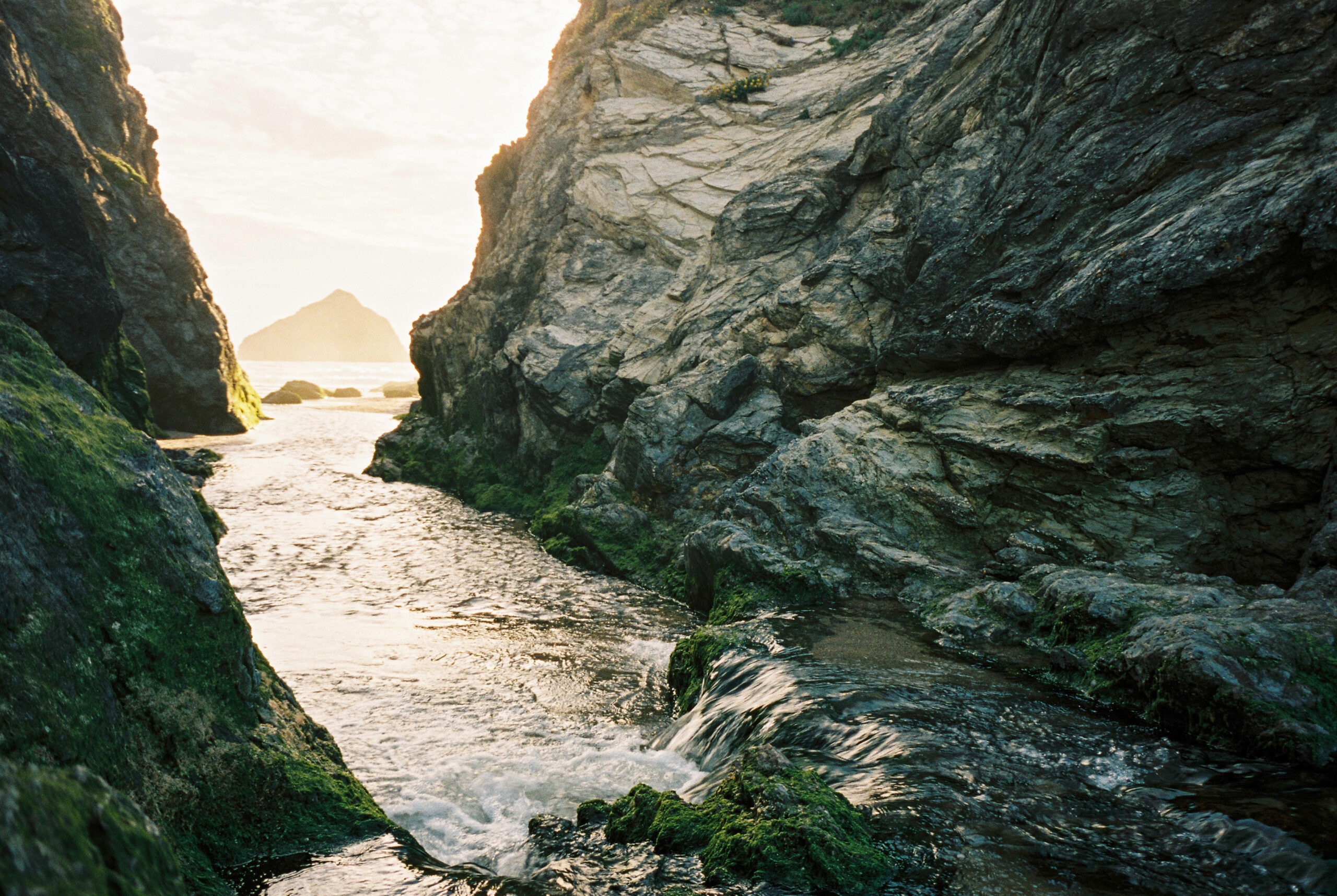
My other thread mount lens is a post war 50mm f/3.5 Elmar. Another tiny lens, it collapses into the body of the camera making my iiia one of the smallest, or at least most pocketable 50mm cameras I own when it’s attached. The Elmar is a little more “vintage” in the way it renders, but actually for its age, in the right circumstances, it’s a very impressive lens.
Other lenses I’ve shot on it include the 50mm Summar I bought with it that dated back to the 30’s, a Summarit from the early 50’s, some 1970’s Russian glass and a 1950’s 90mm f/4 Elmar. But really, I’ve barely even scrapped the surface of possibility. If I wanted to I could also find stacks more quite commonly found lenses made by the likes Leica, Voigtlander, KMZ and Canon – some for as little as £5-10 on eBay.
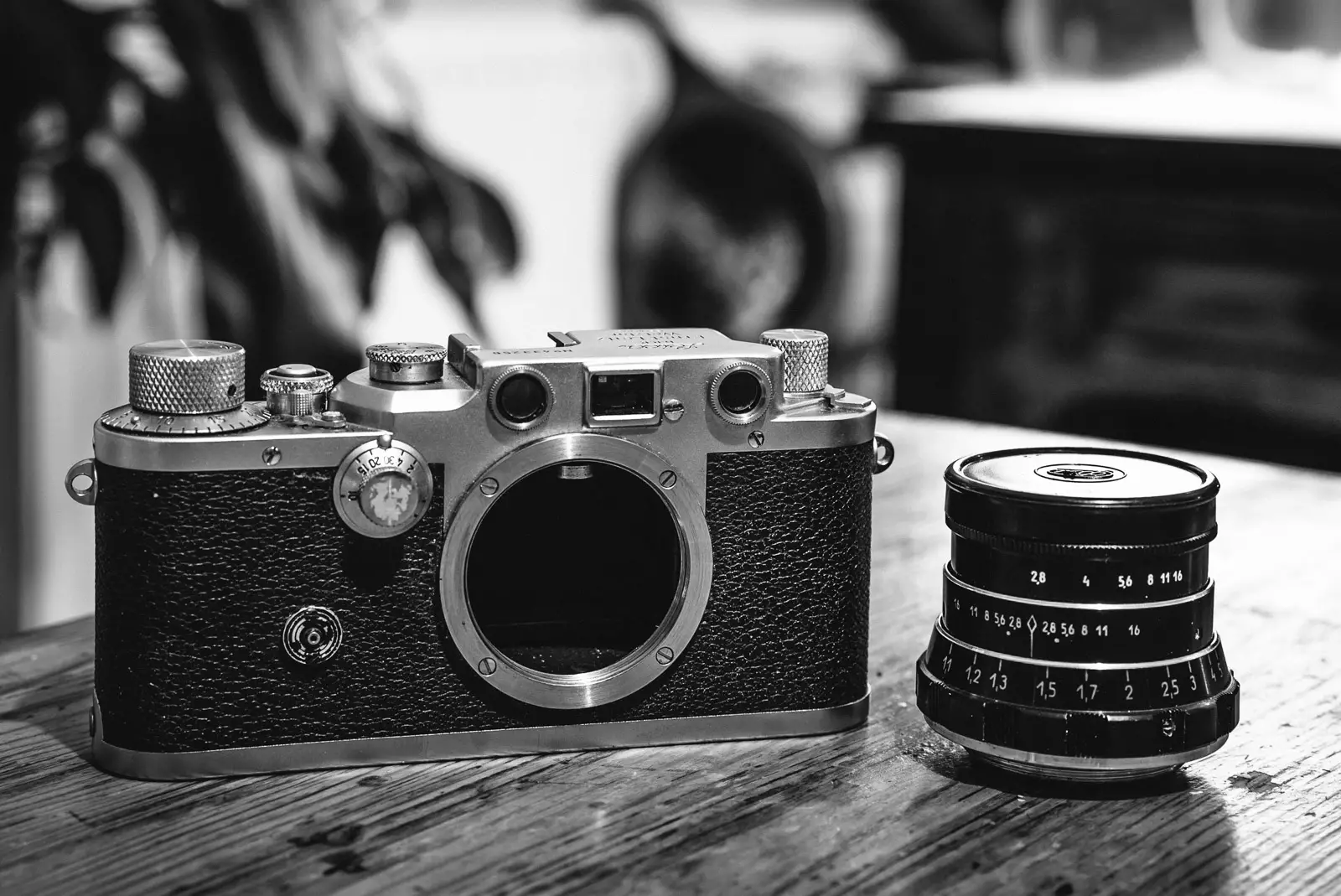
Slightly less common lenses have also been made in Leica thread mount by Nikon, Konica, Minolta, Fuji and Zeiss and that’s just picking the more household brand names from the list. There are also lenses made by some fairly esoteric but historically extremely important brands. Angénieux are a great example of this. Angénieux used retrofocus lens designs to make wide angle lenses for SLRs for the first time in the 1950’s. They also made lenses in Leica thread mount (though you’ll need deep pockets). Taylor Hobson are another great example. The Taylor Hobson Xenon lens design was licensed by Leica to become the Summarit. The Summarit was the lens that went on to form the basis of the now highly prized 50mm Summilux. And lets not forget MS Optical, the one man band run by Miyazaki Sadayasu. The man who in the not to distant future is going to convert one of my compact camera lenses to Leica thread mount. In short, there really is no shortage of lenses to try, and if you really get short of options, thanks to the likes of MS Optical, that’s really not a problem either!
Vast choice Accessories
Of course, lenses aren’t the only thing that are compatible with these cameras. God (and some people even more geeky than me) only knows how many accessories there are available for thread mount Leicas. Ranging from shoe mount accessory rangefinders, viewfinders, flip up sports finders, turret finders, little screw on lenses to make rangefinders more contrasty, close up lens adapters, filters, cases, straps, shutter releases, hoods, bellows, adapters for turning them into an SLR and I’m sure the list could be a lot longer. In short, there is no end of possibility for accessorising a thread mount Leica to your own tastes or whims.
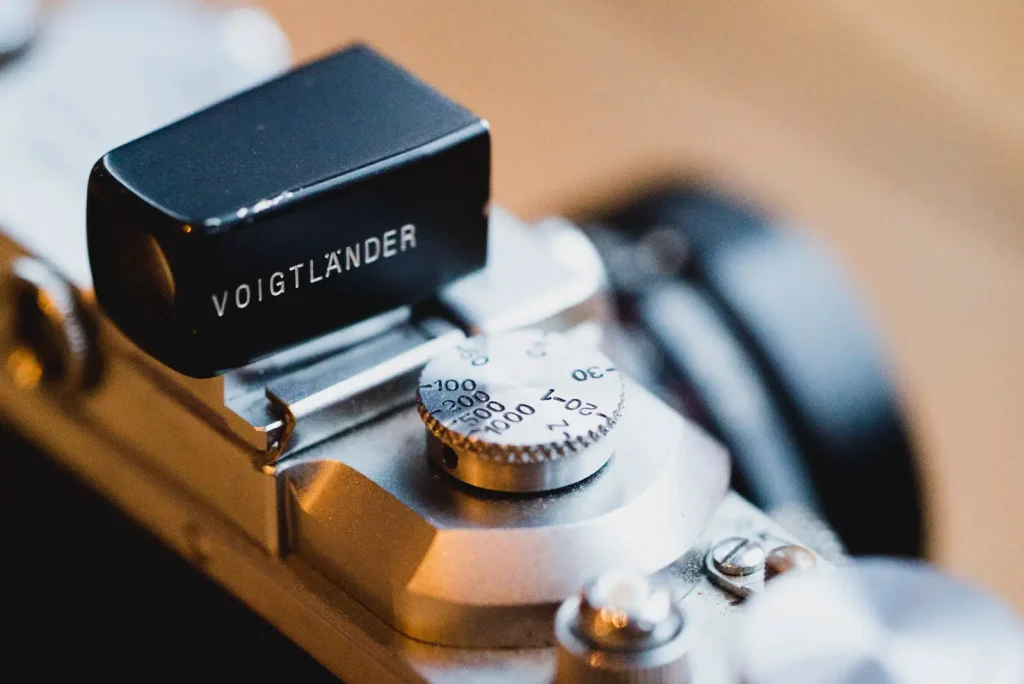
Widely expandable system
And beyond even lenses and accessories, As I have eluded to, there are also a vast array of compatible cameras. Just like with the lenses, many other manufacturers created cameras with the Leica thread mount. After the second world war Leica’s patents were made available to be used by anyone free of charge. The result of this was the production of a vast array of cameras often known as ‘Leica copy cameras’. These were made by all sorts of manufactures, with the Russians making much more affordable (though perhaps not quite as reliable) copies such as the Feds, and the Japanese making cameras such as the the early Canons. The canons being I’m sure at very least close to equal to the Leicas in quality (though I’m yet to try one myself).
Of course the story didn’t end there either, whilst some manufactures carried on making ltm cameras from the 40’s right up until the 90’s, Cossina, branded as Voigtlander, started making LTM cameras in the late 90’s. This means that if you really want a modern counterpart to your old Leica iiic, you can get yourself a Voigtlander made within the last 20 odd years. Not to mention the fact that with a little mount adapter, LTM lenses are of course also fully compatible with M mount cameras too, up to and including the digital cameras Leica are making today.
Just be careful, or you could end up with a collection like Dan:
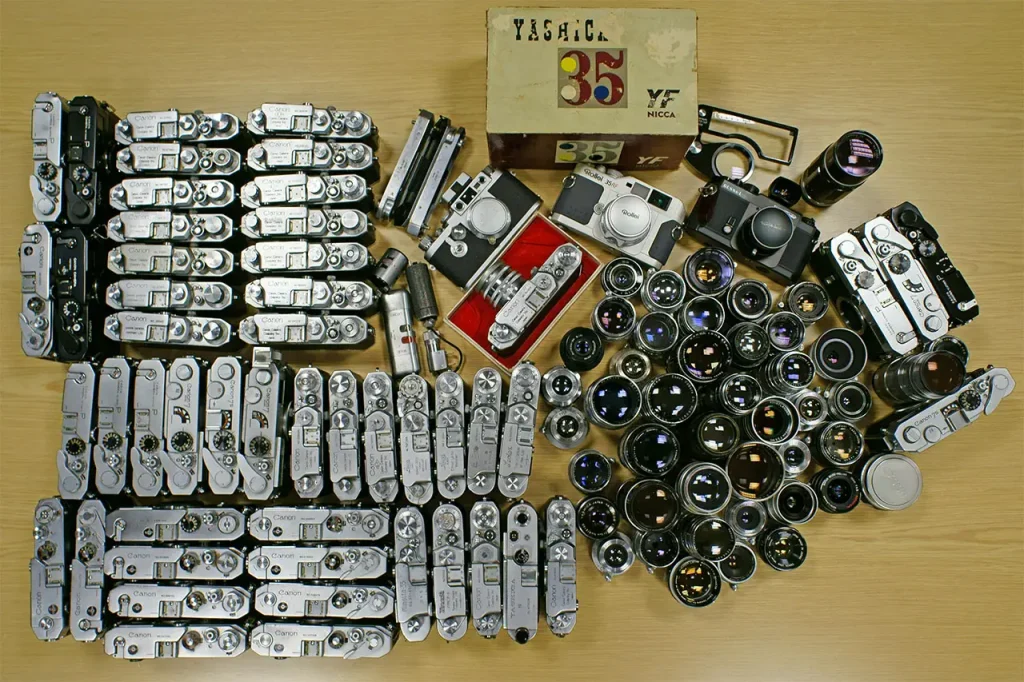
Above photo courtesy of Dan K. His thoughts:
…I hesitate to recommend any particular camera or lens, because it would be a boringly homogenous world if everyone had the same preferences, but if I had to choose, my favourite combination for street photography is my Leica IIIF with Grip-Tac skin, a prewar Leitz Elmar 5cm 1:3.5 and the Voigtlander VCII meter. (taken from Dan’s thoughts here (well worth a read))
… But anyway, I am in real danger of veering of topic here. Yes there are hundred of options when it comes to Leica thread mount cameras, and that is indeed one of the many virtues of the system, but I want to concentrate specifically on the thread mount Leicas themselves. As despite the often less expensive options, the Leicas are definitely a viable option, even taking into account their cost!
Thread mount Leicas are Inexpensive
Compared to Leica M cameras which have shot up in value in recent months/years, Barnack Leicas are quite inexpensive to buy. What’s more important than the initial cost though is that beyond it they are also fantastically cheap to own and maintain. My Leica iiia illustrates this point perfectly:
I bought my iiia for £200 with a Summar lens for £200. This was actually slightly over the odds considering the camera was in need of a service straight away, but considering the external condition of the camera, I was happy. I also subsequently sold the Summar for £100, so let’s say for arguments sake, the camera cost me £100.
I then spent a further £80 on having it serviced. It was cleaned inside and out, including the viewfinder and rangefinder which are both now very clear and very useable. The shutter was also replaced since it was in a pretty shabby shape when I got it. With postage to and from Phil (the guy I used to repair it) let’s round up the total expense to £200.
Chatting on the phone to Phil about it, I asked him how long he expected his repairs to last. He laughed and said he wouldn’t expect to see the camera again in his lifetime. He then asked me how long it has lasted from new. I thought about it for a second, and told him that the chap I bought it off had said it had broken quite recently. Phil told me the shutter he had replaced was likely the original. As such the answer we concluded was about 80 years. “So,” he asked me “would you be disappointed if it only lasted half that until it needed another service?” Of course my answer was no.
Now assuming I keep it for all of those 40 years, which if I never sell it, could be for the rest of my life. That £200 doesn’t add up to much money when you look at it as a cost over its lifetime. In fact it only actually works out as £5 per year to own it, or 1.37 pence a day.
Just to get a bit silly for a moment, compare that to my Sony A7s and it starts to make me feel a bit sick. The A7s cost me £1600 and I’m not expecting it to last me more than 3 years. That works out as £533 a year to own it or £1.46 a day, or £21,000 over 40 years. That means it is quite literally over 100 times more expensive to own.
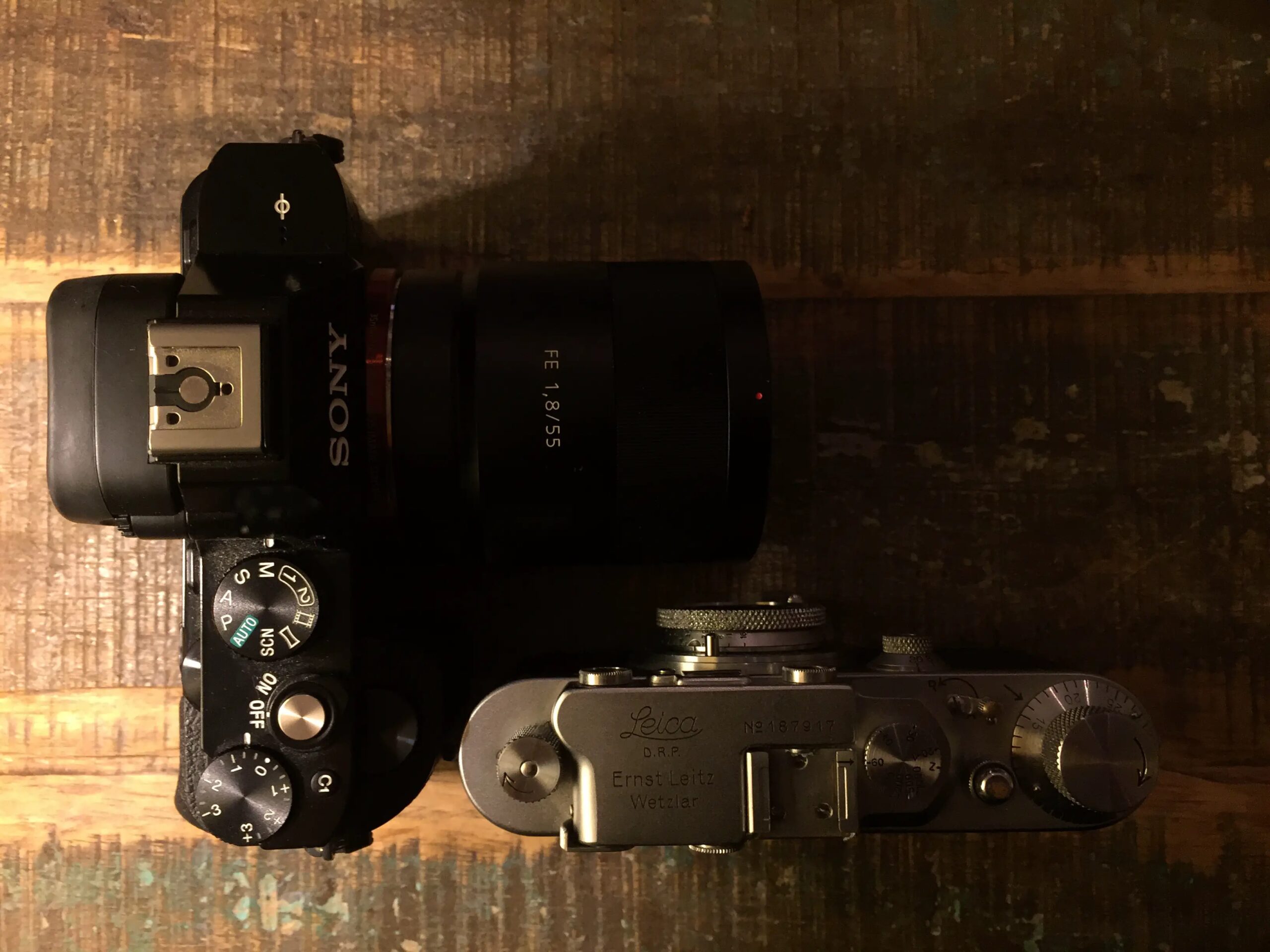
But, of course you can buy an ok digital camera for £200 too. Take the Canikon D150 mkii for example. As we all know, this is the latest greatest Canikon DSLR. It makes your coffee and toast in the morning, and only costs £200. It will also be out of date in 1 year, when the mkiii comes out and they’ve added that all important bagel browning mode to the toaster. Obviously this is just firmware really, but a new model is still on the cards as they will also include a slightly more powerful and different shaped battery. Ok, I’m being a touch facetious here, but it’s just to make a point. Camera manufacturers don’t include “longevity” in the list of specifications of modern cameras.
Advancements have always been a part of industrial design; a new camera comes out and new stuff is added to make it a “better” tool for the job. The problem is, these days it feels a little like cameras come with more superfluous features than anything else and sometimes feel like they have obsolescence actually built in.
If in no other way, the obsolescence is often detectable in build quality. You drop or bash a Canikon D150 and it’s probably game over for the camera as it certainly wouldn’t be cost effective to fix. Drop a Leica, and there is more chance of it being game over for your toe! I feel like my Dad when I say this, but the majority of cameras just aren’t built like they used to be.
Even pro-spec cameras have a much more finite lifespan. I used to shoot a Nikon D3, it’s true I wouldn’t want to drop that on my toe, but the damned thing died after I used it in a spattering of rain, and that’s despite the fact it’s supposed to be fine to use in the rain. It was only actually the screen that died, but when I sent it for repair, they told me it was uneconomical to fix. This is a pro-spec camera relegated to the bin after the screen on the back failed. This is I’m sure down to the much more complicated nature of the camera, the expensive electronics and the cost of the time of the chap to do the repair. But one way or another, if “uneconomical to fix” is the outcome of a breakdown it’s just another tick in the box by the words “poor economy” for me.
Compared to other film cameras
Of course you might say that comparing these old cameras to a digital camera is a little unbalanced, or perhaps even irrelevant. We all know that digital cameras are a bad economy, or at very least just a lot more expensive to own. But even comparing them to other film cameras Barnack Leicas stand up very well when you consider the initial investment divided by the potential lifespan. There are a hell of a lot of film cameras that just won’t last as long. Anything with electronics of any type is liable to fail sooner than anything that’s simply mechanical, and anything plastic is liable to wear out sooner than anything metal. And of course many other film cameras as hard wearing as a Barnack Leica are just as, if not close to as expensive. In short, there are very few cameras that offer a significantly better economy over their lifespan as a thread mount Leica – especially when you take into account their ability to be fixed (something I shall touch on in a mo).
Reading this all back to myself, I’m quite sure I sound fairly mad? But, I actually apply this same logic to all of my Leica purchases. I find comfort in buying Leicas because I don’t feel like I am ever going to lose. If I sell them I won’t lose much if any money, and if I keep them they will last so long that the cost of ownership over their lifespan is comparatively tiny. In short, they feel closer to assets than they do to liabilities, which is hard to say about most things you buy to use these days.
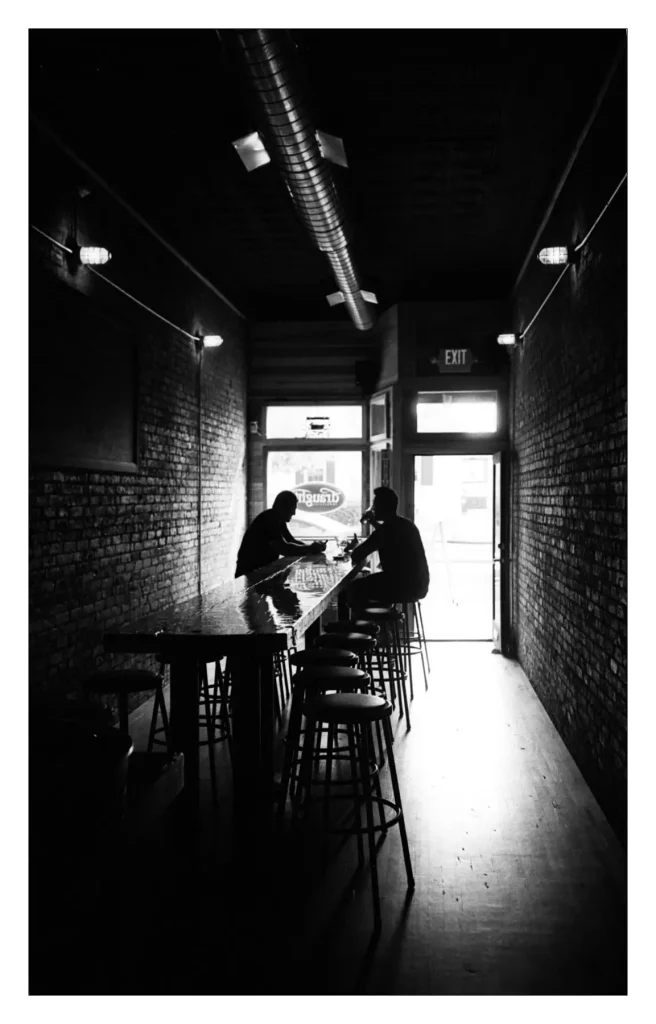
Above photo by Andrej (Filmosaur) who says of his experience with a Barnack Leica
A Barnack Leica is a beautiful machine. The design is elegant, accomplishing its purpose efficiently and without unnecessary distractions. The workmanship is astonishing inside and out; it’s one thing to make the outside pretty, but precision machining on parts no one but the factory and a repairman are ever likely to see distinguishes the good from the great. Using one is an exercise in unmitigated mechanical bliss.
Plus, chicks totally dig them.
Hard wearing, low risk of failure and seemingly easy to repair.
As mentioned, there is no doubting that thread mount Leicas are hard wearing. You only have to pick one up and feel the heft of it to know it’s a serious bit of kit you have in your hands. For my money, there is a great deal of satisfaction in the ownership of something that feels like it has a really good chance of outliving you. But of course, like anything, they can fail.
As mentioned, the one I bought had a shitty shutter that needed replacing from day one. I’m fortunate enough to know of a chap who is highly skilled at repairing these cameras, but actually, if you do a bit of digging there are a fair few people who repair them about. And you know, I think there always will be people about who are willing and able to repair them. These cameras I’m talking about are Leicas, and Leicas are highly prized cameras, and highly prized surely means that there is always going to be someone to repair them…? Not least Leica themselves – though I’d imaging Leica are probably a bit more expensive than Phil! That said, having spoken to Phil about it, I’m not sure their value is the only reason he still repairs them. I think he enjoys it, and reading a between the lines of what he’s said a little, I think he enjoys it because of their mechanical nature, because of how well made they are and therefore no doubt how nice they are to tinker with.
Of course I don’t really know anything about camera repair. I know the basic premise of how a camera works, but very little about how specifically the mechanics of them function. Despite this though, I can still very much enjoy and appreciate these cameras on a mechanical level.
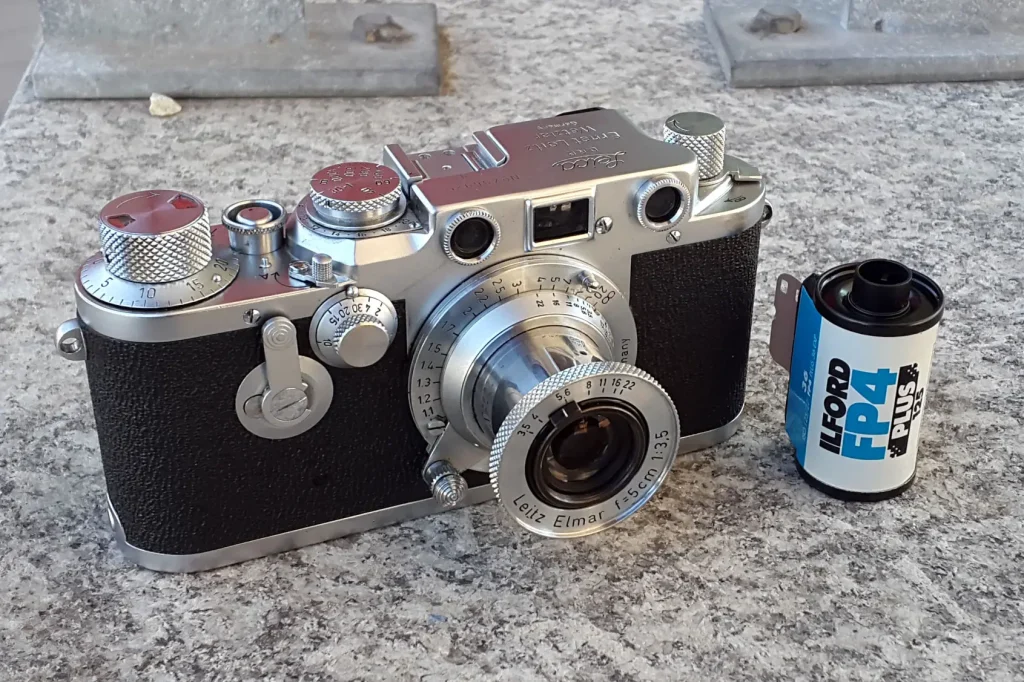
Above photo by Alexander Kernstock says of his feelings toward his Leica IIIc “Sharkskin” converted to a IIIf
The Screw Mount Leica is a manual camera only. There is no Lightmeter, and no Automatic mode! It works both when it’s cold and when its hot outside. With the collapsible Elmar 50mm the camera is very small. It looks like a medical instrument and feels solid and made of high quality materials. The camera is amazing!
Thread mount Leicas – A Mechanically Joy
For a start, they are a complete pleasure to use! Now, I do appreciate that saying that a Barnack Leica is a pleasure to use is a subjective comment, but personally I really enjoy using mine and I know that most of the people who use them, get very similar kicks to me. Despite the fact that the ergonomics could be described as being a little bit primitive compared to some more modern cameras, what makes them a real pleasure is the sense of being mechanically connected to the function of what you are doing. Winding the film on to the next frame feels like exactly that. There isn’t even a ratcheted lever to speed up the process, you take the photo and then twist the knurled knob until the shutter is cocked and the next frame is lined up. This is not something that can be done particularly quickly, certainly not as quickly an M mount Leica, but there is no doubting the sense of connection to the function.
This connection to function is evident in most other aspects of the camera too. Rewinding the film is achieved using another knurled knob and is equally slow. Loading the film requires a trimming of the film leader and is quite a precise process to get it loaded correctly. Changing shutter speed using the dial on the top of the camera means pulling it up, rotating it and sitting it down; it just feels purposeful when you do it. All these things take longer and require that little bit more thought than they do with a more modern film camera. In fact, they all slow the process somewhat, and force you to think harder about what you are doing and why you are doing it.
I read many photographers talking about how they love to shoot film because it slows them down. To some degree, at least in the context of how it is often said, I think of this as a bit of a misconception. Shooting film shouldn’t functionally slow anyone down. Whereas shooting certain types of cameras can very easily do so. Barnack Leicas are a perfect illustration of this, the slightly antiquated way in which they work, forces a steadiness and more thoughtful approach to photography… or at least they do to start with…
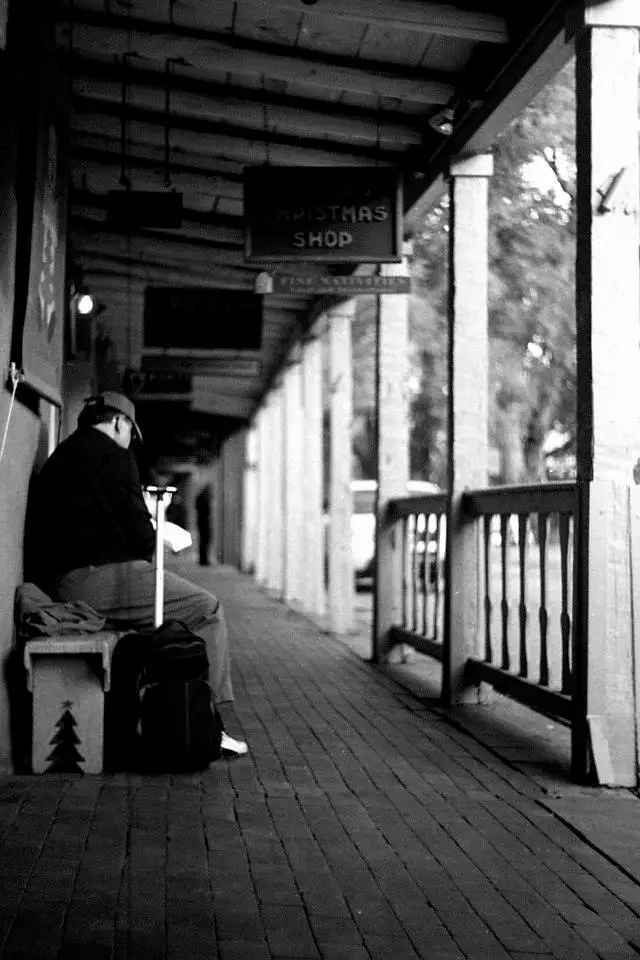
Above photo by Alva Christo who says of his feelings toward his Leica iiif:
What I like from this camera is the limited shutter speed, it forces me to think. It’s classic, has a lovely mechanism and a nice lens. The summitar has great sharpness, DOF, unique glow and is really great for black & white
Being prepared…
For me, the real joy of using a thread mount Leica comes about once you’ve accrued a certain amount of experience with one. As I’d expect any regular user of a thread mount Leica to tell you, the key to using them quickly is being prepared. With the lens preset to an appropriate focused distance and the aperture and shutter set to appropriate setting for the film and light, a screw mount Leica can be raised to the eye and shot as fast as any other camera made in the history of cameras. In fact due to the entirely mechanical nature of them, they are arguably faster than many cameras that have come since.
What makes a thread mount Leica that little bit more interesting to use is that this same level of preparedness is required for lens choice and film loading too. It’s no good deciding you want to mount a different thread mount lens in the spur of the moment, it just can’t be done all that quickly. By thinking about what’s coming next when you’re out shooting, you can make sure the correct lens is mounted in good time. Loading a new roll of film when you’re out shooting can be sped up by being prepared too. It can be incredibly fiddly if you have to start trimming film leaders in the field, whereas if you trim them before you go out, life can be made a lot easier and the process quicker.
What’s made all the more wonderful about all of this, is that it doesn’t matter at what level of skill you are, you still have to think way ahead about the photos you’re going to take to get the best out of the thread mount camera. Learning the camera, and becoming more familiar with the thought processes and required preparedness helps a great deal but you still have to be on the ball to get the most out of a thread mount Leica, even when your fully versed in how they work.
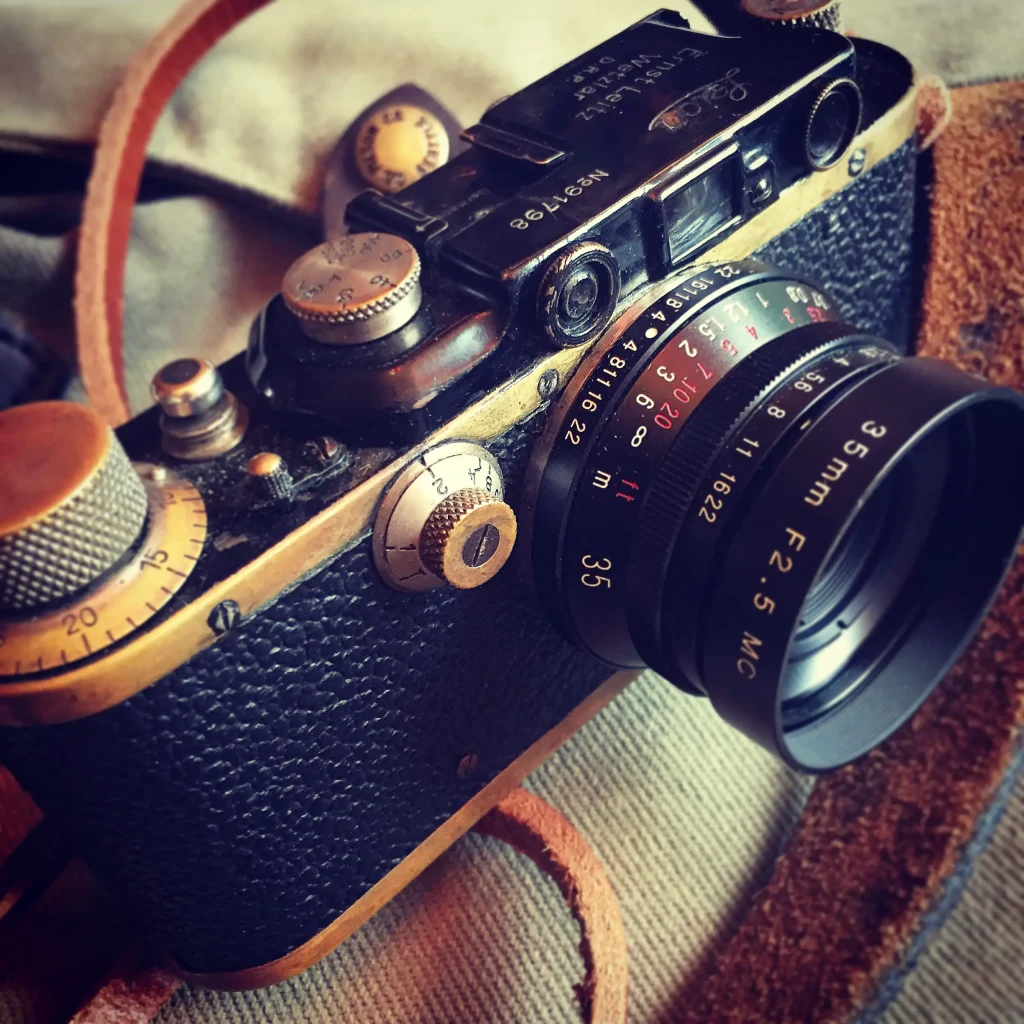
Photo courtesy of Eric J Hessler, his thoughts:
Anybody with a serious interest in photography should use a LTM body for a while. The clockwork motions, slow pace and deliberate exposure methodology is unlike any modern camera you’ll find. Only when you appreciate an art form at its base, will you begin to understand the places it can take you.
They make good teachers
Now this is a point I wasn’t sure whether or not to include. The problem with this post is that it’s likely to fuel people’s gear acquisition syndrome. The problem with GAS is that it comes in many forms (at least I think it does), the least productive of of which I call delusional GAS. Delusional GAS is the desire to buy a camera because you think it will improve your photography. Of course, the reality is this is quite often a delusion.
That said, because of my above comments about how these cameras slow you down and make you think, it’s hard to argue with the idea that a screw thread Leica won’t teach you something about photography. Being forced to think ahead is being forced just to think, and thinking about what you are doing is in itself the process of learning to be a better photographer.
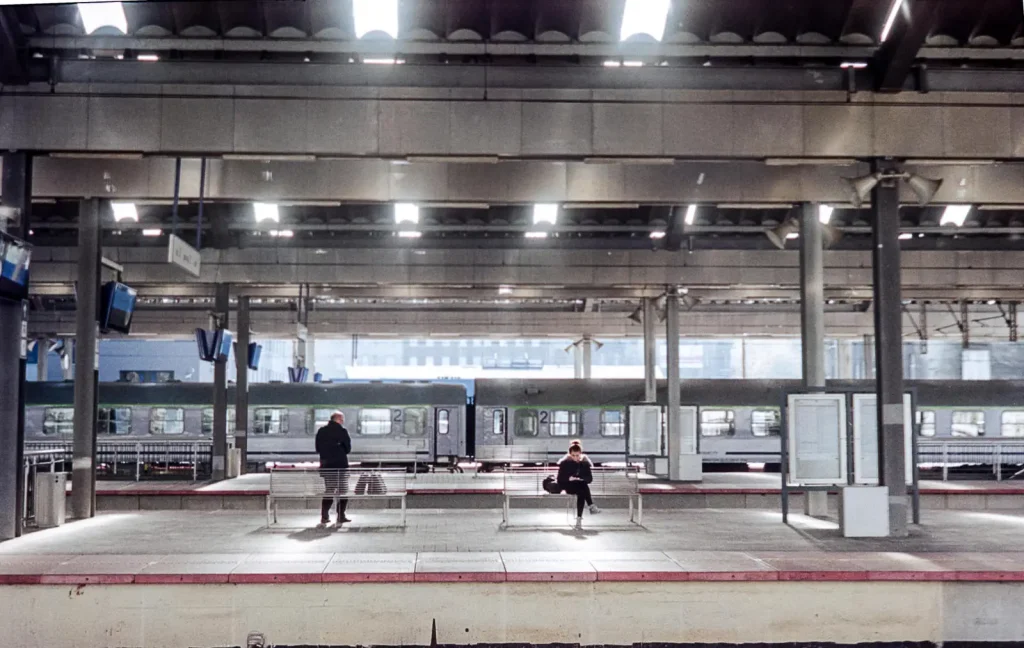
Dominik Mrzyk’s thoughts
A Barnack Leica is really small. Just as small as you can imagine. It’s unobtrusive. It’s silent (though not as silent as leaf-shutter cameras). It’s solid. Mechanical. It’s a totally different experience comparing to film SLRs…
They are small
My closing point, though short, is possibly one of the most important. It is certainly one of the most relevant to this blog.
As a man of ill health in a time before modern medicines one of Barnack’s motivations was supposedly to make a camera that he could carry without causing himself undue harm. I have no idea how true this is, but I really like the story… Regardless of his motivations though, it is true that Barnack’s goal was to make a camera that was as small as it could be whilst retaining a big enough negative to create an acceptably detailed print through enlargement. The subsequent events that have transpired since his early inventions just go to show how successful a concept they were! As I mention in this post, it is in fact their small size that inspired me to start writing about Leicas. It’s also one of the biggest factors in my decision, and indeed ability to once in a while put a thread mount Leica in my pocket!
Thanks for reading
Hamish
Links
Roger’s Screw Mount Leica FAQ
Cameraquest guide to the Leica Screw Mount Camera
List of Leica thread mount lens Manufacturers
Wiki reference about ltm
Share this post:
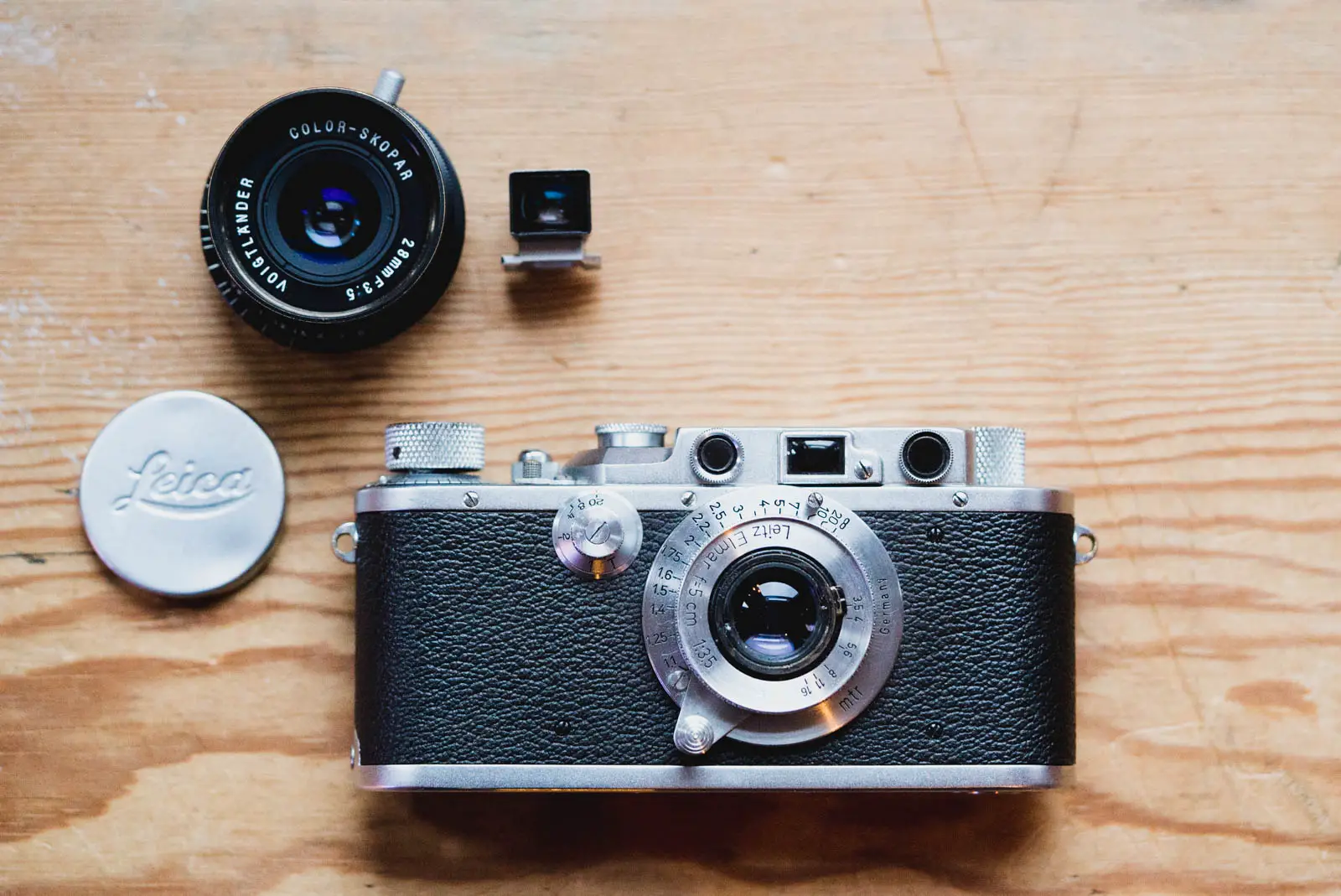
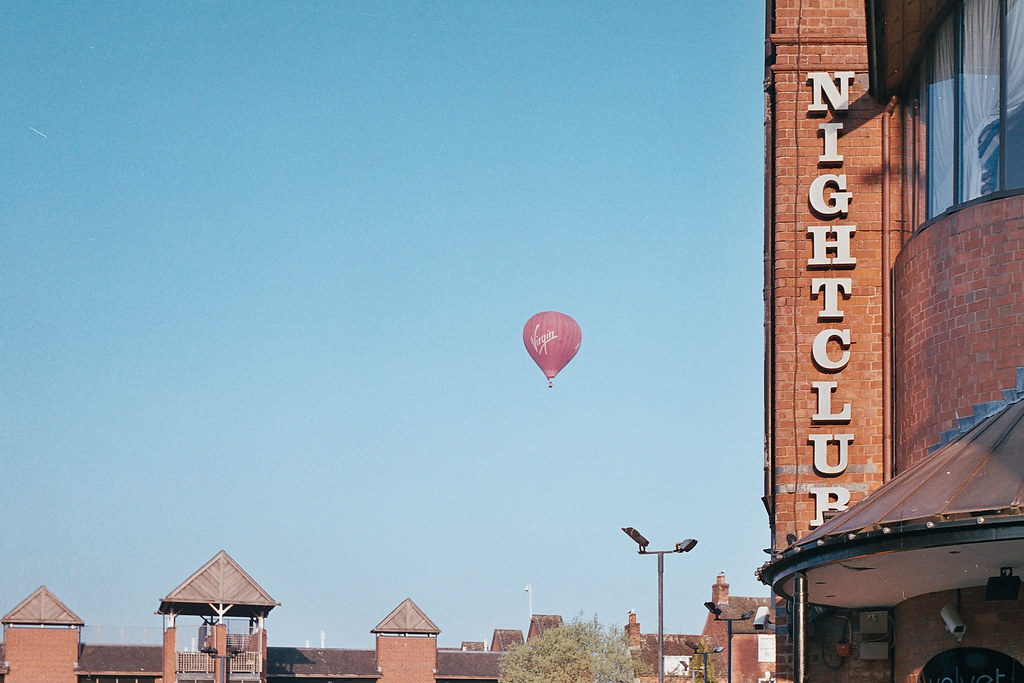








Comments
Matthew on 7 Reasons you should own a Thread Mount Leica
Comment posted: 02/01/2016
Do you have an easy reference to the multitude of models (why Alexander would have a IIIc converted to a IIIf for example) and maybe a recommendation for "my first Barnac Leica"?
Of course after buying one, using would would be the next hurdle. I've heard about having to cut the film, but also, is it right that if you don't do certain things in the right order before shooting you can break it?
Accompanying videos on your YouTube would be invaluable ;)
Comment posted: 02/01/2016
Comment posted: 02/01/2016
Comment posted: 02/01/2016
Comment posted: 02/01/2016
Comment posted: 02/01/2016
Comment posted: 02/01/2016
Comment posted: 02/01/2016
Comment posted: 02/01/2016
Comment posted: 02/01/2016
Comment posted: 02/01/2016
jeremy north on 7 Reasons you should own a Thread Mount Leica
Comment posted: 02/01/2016
http://www.peeble.com/screwmount.htm
I enjoyed your LTM odyssey also in the linked article, as well as your readers' comments and pictures on this post.
Comment posted: 02/01/2016
Des on 7 Reasons you should own a Thread Mount Leica
Comment posted: 02/01/2016
Comment posted: 02/01/2016
Geoff on 7 Reasons you should own a Thread Mount Leica
Comment posted: 02/01/2016
The article has justified my actions so far. Thank you Hamish.
Comment posted: 02/01/2016
Dave Donnelly on 7 Reasons you should own a Thread Mount Leica
Comment posted: 02/01/2016
Comment posted: 02/01/2016
Ken Hindle-May on 7 Reasons you should own a Thread Mount Leica
Comment posted: 03/01/2016
After a few car boot successes, I wondered how much money someone who knew film cameras could make by going to a lot of them, picking up the better cameras, testing them and selling them on eBay. It occurred to me that while viable in the short term, it's a situation that can't continue much longer for two reasons:
1. After the early 2000s cameras, your supply is simply going to stop. You're only going to get early digital cameras from that point on, and they're basically worthless.
2. That means that as more and more of these later, electronic cameras fail, they aren't going to be replaced. Those cheap car boot finds are going to become less and less common. Probably already are, in fact.
So with that in mind, while you might be able to justify spending £150 on a Yashica T4 today what's the likelihood, realistically, that it's still going to be functional in 10 years time? Not great, basically. I love my Olympus XA to bits, but I have to face the likelihood that at some point it's going to develop a fine electronic fault and that will be the end of it. All of that, taken together and assuming film production finds a level to consolidate at (and Harman/Ilford don't look quite as secure as they did a year ago), means that the pendulum has to swing back to mechanical cameras that aren't reliant on irreplaceable PCBs to function. Against that backdrop, you could almost convince yourself that buying and old Leica today is an investment against the day prices inevitably soar.
For me personally, though, it's a question of whether or not I'm really a rangefinder guy. I already have a very good mechanical camera, a Pentax MX which when fitted with its 40mm pancake lens is probably not much bigger or heavier than an old Leica, with the added benefit of an uncoupled meter. It's beautifully engineered, too; cocking the shutter feels like cocking a Winchester rifle (though unfortunately, firing it sounds a bit like a Winchester, too). I tend to be quite meticulous in my composition with manual focus cameras, so tend to favour SLRs for that reason. The XA is wide enough to be quite forgiving, but something with a 50mm? I'm not so sure. I need to repair the Fed 4 I picked up a while back, then put a few rolls through it and see how I feel. Maybe if it goes well I can sell the Fed, buy a IIIa and convince my wife it was a Leica all along?
Comment posted: 03/01/2016
Comment posted: 03/01/2016
Comment posted: 03/01/2016
Dan James on 7 Reasons you should own a Thread Mount Leica
Comment posted: 04/01/2016
I have a Zorki-4 with a Jupiter 8 50/2 lens and an Industar 28M. I also thought to have a Lecia camera you would need a Leica lens too - and that these would cost as least as much as the camera body again. Am I right in thinking my Jupiter-8 and Industar 26M lenses are compatible with a Leica iii? Would I likely find a Leica iii much different in use to my Zorki-4 (they look very similar)?
Thanks!
Comment posted: 04/01/2016
Comment posted: 04/01/2016
Comment posted: 04/01/2016
David Alexander-Watts on 7 Reasons you should own a Thread Mount Leica
Comment posted: 04/01/2016
To emphasise one point you made, the Barnacks work extremely well with the Voigtlander wide angle thread mount lenses. My favourite is the 25mm Colour Skopar, which is scale focussed rather than rangefinder-linked, and makes the camera a true point and shoot.
My ideal lens for this camera though would be the Zeiss 21mm f4.5 which I'd love to get converted to LTM.
Comment posted: 04/01/2016
Colin on 7 Reasons you should own a Thread Mount Leica
Comment posted: 04/01/2016
I have three LTM Leicas - 2 post-war IIIc and one black II from 1932. That one needs a CLA as does the pre-war Summar I’d like to at least try with it so I haven’t really used it yet. An example, I fear, of GAS #2 and 5 from your other recent post.
The quirky film loading and cutting the leader is odd at first but I soon got used to it. I just count 20 perforations from the start of the film and cut between 20 and 21. Small scissors work best for me. I also like the separate focus/composition windows especially when using hyperlocal focussing - I’m not then bothered by the Out of Focus image.
I have other rangefinders including some FSU types which, if working properly, are good value for money. Just not as rare the eastern European sellers would have you believe. But those Leicas just fit better in the hand. Seems they got that design just right back in the 30s.
As for FSU lenses on a Leica, I’ve done that and they work well enough but their focussing may not always be that good — see Dante Stella’s article here http://dantestella.com/technical/compat.html
The other issue, as I see it, is who will be able to service these machines in another 20 years or so? I doubt modern cameras are built by hand anymore, even Leica, so are the current crop of repairers training their successors?
Comment posted: 04/01/2016
Comment posted: 04/01/2016
Comment posted: 04/01/2016
Ja, watt denn nu’? | RetroCamera.de on 7 Reasons you should own a Thread Mount Leica
Comment posted: 09/01/2016
Bas on 7 Reasons you should own a Thread Mount Leica
Comment posted: 26/01/2016
"there is no end of possibility for accessorising a thread mount Leica to your own tastes or whims"
This is in fact what makes me doubt about using Leica rangefinders, I'm not looking forward at all to even have to think about using close-up lens adapters, shoe mount accessory rangefinders, viewfinders etc. On the other hand I don't need all of those and could be happy using just one or two lenses. Already have a 28mm Ricoh viewfinder to use with a Ricoh grdIII, so my choice would be a 50 and 28mm I guess. Can recommend that Ricoh viewfinder (GV-2) very much. Any suggestions on a good, affordable 28mm for the LTM?
Comment posted: 26/01/2016
Youra on 7 Reasons you should own a Thread Mount Leica
Comment posted: 27/01/2016
Comment posted: 27/01/2016
Rich on 7 Reasons you should own a Thread Mount Leica
Comment posted: 05/02/2016
Comment posted: 05/02/2016
First photos with a Leica IIIb | Anthony Killeen on 7 Reasons you should own a Thread Mount Leica
Comment posted: 16/02/2016
Mike Hinkleman on 7 Reasons you should own a Thread Mount Leica
Comment posted: 01/09/2016
An interesting subject is how many of the less than 700,000 screw mounts remain today. I'm guessing maybe 250,000.
I have a few - well quite a few - Leica screw mounts and I went from user to mint and back to something unique, those with people's names engraved on them. Initially I would never have looked twice at a Leica that had been 'disfigured' but now they would be my first choice. And they're uncommon possibly because with their marks they are definitely not collectible and become 'parts cameras.' I only have a couple of these, one a chrome Leica ii with a 5cm elmar from 1937. Perfect in every way with John Matthews name and home address in Youngstown Ohio engraved on the body as well as the lens. For John that Leica was important to him and he haf it tattooed.
Comment posted: 01/09/2016
Ken Johnson on 7 Reasons you should own a Thread Mount Leica
Comment posted: 04/06/2017
I had a 1934 Austin 7 years ago and on the back seat a Black Leica never used by my and I was pestered to sell did not want to but give up in the end often wondered what it would be like to use.
Alvaro on 7 Reasons you should own a Thread Mount Leica
Comment posted: 29/07/2017
Voigtlander 25mm Snapshot Skopar - Review by Eddy - 35mmc on 7 Reasons you should own a Thread Mount Leica
Comment posted: 07/01/2018
Lilianna Elrod on 7 Reasons you should own a Thread Mount Leica
Comment posted: 22/08/2018
So your post here resonates with me. So Svelte, so well made and QUIET.
David on 7 Reasons you should own a Thread Mount Leica
Comment posted: 07/10/2018
Comment posted: 07/10/2018
Five Frames with a Fed 50mm f/3.5 LTM lens (Industar-10) - By Christian Irving Cayetano - 35mmc on 7 Reasons you should own a Thread Mount Leica
Comment posted: 27/10/2018
A 1932 Leica Standard Review, and some thoughts around the Benefits of Standardisation - 35mmc on 7 Reasons you should own a Thread Mount Leica
Comment posted: 14/01/2019
Simon Panter on 7 Reasons you should own a Thread Mount Leica
Comment posted: 30/03/2019
Wonderfully interesting reading. I have recently purchased a 111a, a Sekonic Twinmate L-208 (the hotshoe attachment is a great idea), and am waiting on a Summar 5cm. I can't wait to see the results. I have been a 'tog for over 40 years. My first 'proper' camera was a new OM1n, and I still have it. A wonderful camera that sits in the palm of your hand, and the Leica puts me in mind of it, and vice-versa.
Steven Segal on 7 Reasons you should own a Thread Mount Leica
Comment posted: 09/06/2019
I put a few images on the Leica forum ±98 and 99 here. It's not "Historica" to me, it's something to use and enjoy.
https://www.l-camera-forum.com/topic/139760-leica-historica/page/5/#comments
Comment posted: 09/06/2019
John Carlson-Zizic on 7 Reasons you should own a Thread Mount Leica
Comment posted: 15/08/2020
My Leica thread mount (only Leica) is a 1954 IIIf red dial with self timer. A Elmar 5cm f3.5 from 1951 lives on the camera and that little collapsable is amazing. I have also collected a Serenar 35mm f2.8 w/ viewfinder, Serenar 50mm f1.8 and a Serenar 100mm f4 w/ viewfinder however I would like to try a modern 50mm on it, do you have any suggestions?
Good point on speed, I find the Leica IIIf is no slower in practice than my Hasselblad 500cm or Rolleiflex TLR, they just take a bit of getting use to.
Warm regards
John